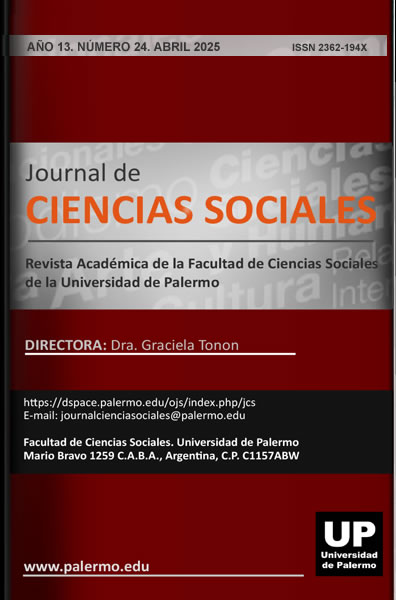Representación de la moda china en los medios occidentales: influencia de las diferencias culturales y perspectivas en la era digital
Abstract
This article analyzes the representation of Chinese fashion in Western media, focusing on how cultural differences, stereotypes, and digitalization have influenced its global perception. It explores media narratives that, in many cases, have reduced Chinese fashion to an exotic aesthetic or appropriated it without considering its genuine cultural context. In this regard, the concept of soft power is addressed, examining how fashion has been used as a strategy by both the Chinese government and Western brands to project a global image. The article also examines the tensions between aesthetic admiration and cultural simplification, as evidenced by the Chinese market’s resistance to certain representations. Furthermore, it highlights the role of digitalization, which has enabled the emergence of alternative voices, promoting a more authentic view of Chinese fashion. Chinese designers and Asian communities have begun to challenge dominant narratives, establishing their own discourse that merges tradition with contemporary elements. Finally, the article reflects on the tensions between nationalism and modernization, as well as on the importance of more inclusive and equitable fashion journalism—one that acknowledges non-Western cultures and fosters a more diverse dialogue within the global industry.
Downloads
References
Anderson, B. (1983). Imagined communities: Reflections on the origin and spread of nationalism. Verso.
Bauman, Z. (2000). La cultura en el mundo de la modernidad líquida. Fondo de Cultura Económica.
Barthes, R. (1967). The fashion system. Hill and Wang.
Beck, U. (2006). La sociedad del riesgo: hacia una nueva modernidad. Paidós.
Benjamin, W. (2003). The work of art in the age of mechanical reproduction. Penguin Classics.
Bhabha, H. K. (1994). The Location of Culture. Routledge.
Bourdieu, P. (1984). Distinction: A social critique of the judgement of taste. Harvard University Press.
Castells, M. (1996). The rise of the network society. Wiley-Blackwell.
Cold Tea Collective. (2022). Redefining and celebrating Asian Americans in fashion. Cold Tea Collective. https://coldteacollective.com/redefining-celebrating-asian-americans-fashion/
Feng, J. (2022). Fashion in altermodern China (Dress Cultures). Bloomsbury Publishing.
Hall, S. (1997). Representation: Cultural representations and signifying practices. Sage Publications.
Jenkins, H. (2006). Convergence culture: Where old and new media collide. NYU Press.
Nye, J. (2004). Soft Power: The Means to Success in World Politics. PublicAffairs.
Pickering, M. (2001). Stereotyping: The politics of representation. Macmillan.
Robertson, R. (1992). Globalization: Social Theory and Global Culture. Sage Publications.
Said, E. (1978). Orientalism. Pantheon Books.
Steele, V., & Major, J. S. (1999). China chic: East meets West. Yale University Press.
T Magazine. (2021). How Asian Americans in fashion changed the industry. CFDA. https://cfda.com/news/from-t-magazine-how-asian-americans-in-fashion-changed-the-industry
Tufekci, Z. (2017). Twitter and tear gas: The power and fragility of networked protest. Yale University Press.
Young, J. O. (2005). Profound offense and cultural appropriation. The Journal of Aesthetics and Art Criticism, 63(2), 135-146. https://doi.org/10.1111/j.0021-8529.2005.00190.x
The authors retain the rights to their work guaranteeing this journal the right of first publication, committing to cite the Journal of Social Sciences as a reference of the original publication.
The works published in the Journal are published under the terms indicated in the Creative Commons License with the International Attribution 4.0 (CC BY 4.0).




























